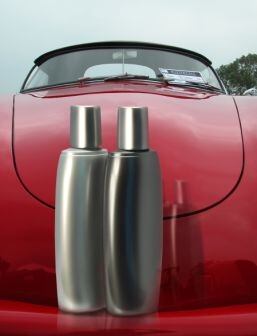It joins the company’s LiquidMetals Colors range and is compatible with a range of plastic resins used to make molded parts such as closures, as well as bottles and containers.
In monolayer constructions the concentrate will create a silver, chrome effect, but with a multilayer technique it can also be associated with a color, explained strategic business manager Doug Brownfield.
“If the middle layer has a red color, and the UltraChrome is added to the skin, you will get a red chrome effect,” he told CosmeticsDesign.com USA.
Although not the first plastic additive that claims to produce a metallic effect, Brownfield believes UltraChrome can get you closer to the chrome effect than anything currently available.
“We have liquid metal lines but we believe UltraChrome is a whole new level, getting you closer to the chrome look without the extra step,” he said.
Competitive with secondary processes
When compared to a simple color additive in the masterbatch range the UltraChrome is more expensive, but when compared to a secondary metallization option it is more competitive, Brownfield explained.
In addition, using the UltraChrome during the molding process means the effect can be attained in-house instead of being sent away for vacuum metallization or to be sprayed.
Achieving the desired effect at the mold location can cut down on the costs, both economic and environmental, associated with sending the part to another location for further treatment.
In addition to cutting down on transport emissions, UltraChrome also cuts down on the VOC (volatile organic compounds) emissions involved with the metallization process itself.
According to the company, the additive is made from natural mica that has a synthetic coating added to create the desired effect. Its addition does not alter the recyclability of the products, Ampacet claimed.

Furthermore, Brownfield explained that it can be used with a percentage of recycled material but it would have to be used with the multilayer technique.
“You could use PCR (post consumer regrind) in your middle layer with a color and then UltraChrome on the skin, but you would have to use a color as PCR can look a bit dirty and would dull down the overall effect.”
